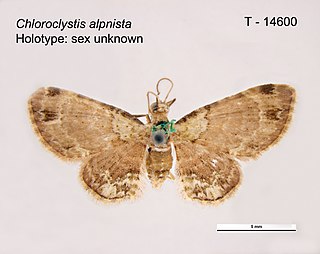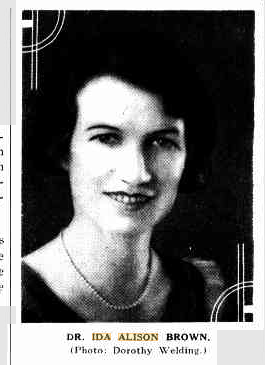Yugambal, or Yugumbil (Jukambil), is an Australian Aboriginal language of northern New South Wales.
Joyce Winifred Vickery was an Australian botanist who specialised in taxonomy and became well known in Australia for forensic botany.

The Linnean Society of New South Wales promotes the Cultivation and Study of the Science of Natural History in all its Branches and was founded in Sydney, New South Wales (Australia) in 1874 and incorporated in 1884.

Chloroclystis alpnista is a moth in the family Geometridae. It is found in Australia (Queensland). Subspecies eupora was described from Bali.
Chloroclystis catastreptes, the green and brown carpet, is a moth in the family Geometridae. It was described by Edward Meyrick in 1891. It is found in Australia.
Chloroclystis elaeopa is a moth in the family Geometridae. It was described by Alfred Jefferis Turner in 1908. It is found in Queensland, Australia.
Chloroclystis plinthochyta is a moth in the family Geometridae. It was described by Turner in 1931. It is endemic to Australia (Queensland).
Chloroclystis athaumasta is a moth in the family Geometridae. It was described by Turner in 1908. It is found in Australia (Queensland).
Chloroclystis stenophrica is a moth in the family Geometridae. It was described by Turner in 1931. It is found in Australia (Queensland).
Chloroclystis pyrsodonta is a moth in the family Geometridae. It was described by Turner in 1922. It is found in Australia (Queensland). It has also been recorded from Fiji.
Chloroclystis poliophrica is a moth in the family Geometridae. It was described by Turner in 1922. It is found in Australia (Queensland).
Chloroclystis phoenochyta is a moth in the family Geometridae. It was described by Turner in 1922. It is found in Australia (Queensland).
Chloroclystis perissa is a moth in the family Geometridae. It was described by Turner in 1908. It is found in Australia (Queensland).
Chloroclystis pauxillula is a moth in the family Geometridae. It is found in Australia (Queensland).
Gymnoscelis bryodes is a moth in the family Geometridae. It was described by Alfred Jefferis Turner in 1907. It is found in Australia.
Gymnoscelis callichlora is a moth in the family Geometridae. It was described by Alfred Jefferis Turner in 1907 and it is found in Australia (Queensland).
Gymnoscelis chlorobapta is a 9 millimetres (0.35 in) long moth in the family Geometridae. It is found in Australia (Queensland).
Gymnoscelis tanaoptila is a moth in the family Geometridae. It was described by Alfred Jefferis Turner in 1907. It is found in Australia (Queensland).

Ida Alison Browne (1900–1976) was an Australian geologist, petrologist and paleontologist at the University of Sydney.
Heosphora is a genus of moths in the family Pyralidae. The genus was first described by Edward Meyrick in 1882. The type species is Anerastia psamathella Meyrick, 1879, designated as such by George Hampson in 1901. All Heosphora species are found in Australia.


